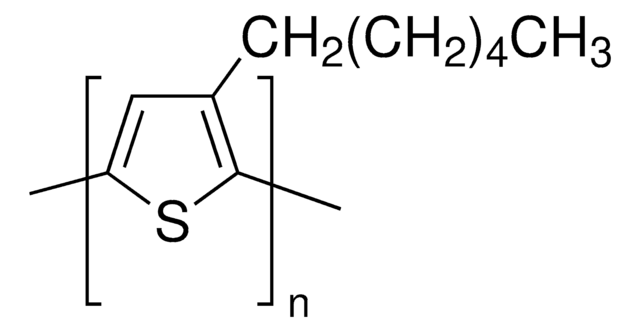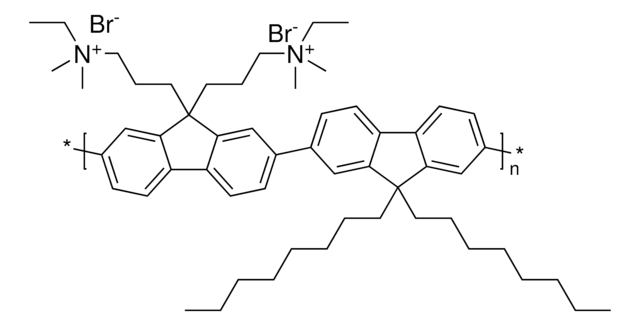932418
Poly[bis(4-phenyl)(2,4,6-trimethylphenyl)amine]
Synonym(s):
PTAA, Poly[[(2,4,6-trimethylphenyl)imino][1,1′-biphenyl]-4,4′-diyl]
About This Item
Recommended Products
description
μh ≈ 10-2 to 10−3 cm2 V−1 s−1
Quality Level
mol wt
Mw 20,000-100,000 by GPC
solubility
chlorobenzene: soluble
chloroform: soluble
toluene: soluble
λmax
388 nm±5 nm in dichloromethane
fluorescence
λex 414-434 nm in dichloromethane
Orbital energy
HOMO 5.3 eV
LUMO 2.3 eV
Looking for similar products? Visit Product Comparison Guide
Related Categories
Application
Storage Class Code
11 - Combustible Solids
WGK
WGK 3
Flash Point(F)
Not applicable
Flash Point(C)
Not applicable
Choose from one of the most recent versions:
Certificates of Analysis (COA)
Sorry, we don't have COAs for this product available online at this time.
If you need assistance, please contact Customer Support.
Already Own This Product?
Find documentation for the products that you have recently purchased in the Document Library.
Our team of scientists has experience in all areas of research including Life Science, Material Science, Chemical Synthesis, Chromatography, Analytical and many others.
Contact Technical Service
![[6,6]-Phenyl C61 butyric acid methyl ester ≥99%](/deepweb/assets/sigmaaldrich/product/structures/359/221/d990c746-0960-4c69-bf76-fe09b193824d/640/d990c746-0960-4c69-bf76-fe09b193824d.png)




![Di-[4-(N,N-di-p-tolyl-amino)-phenyl]cyclohexane ≥97% (HPLC)](/deepweb/assets/sigmaaldrich/product/structures/111/787/16bde1ce-c76d-46d6-9e1f-9ce09f82d038/640/16bde1ce-c76d-46d6-9e1f-9ce09f82d038.png)


